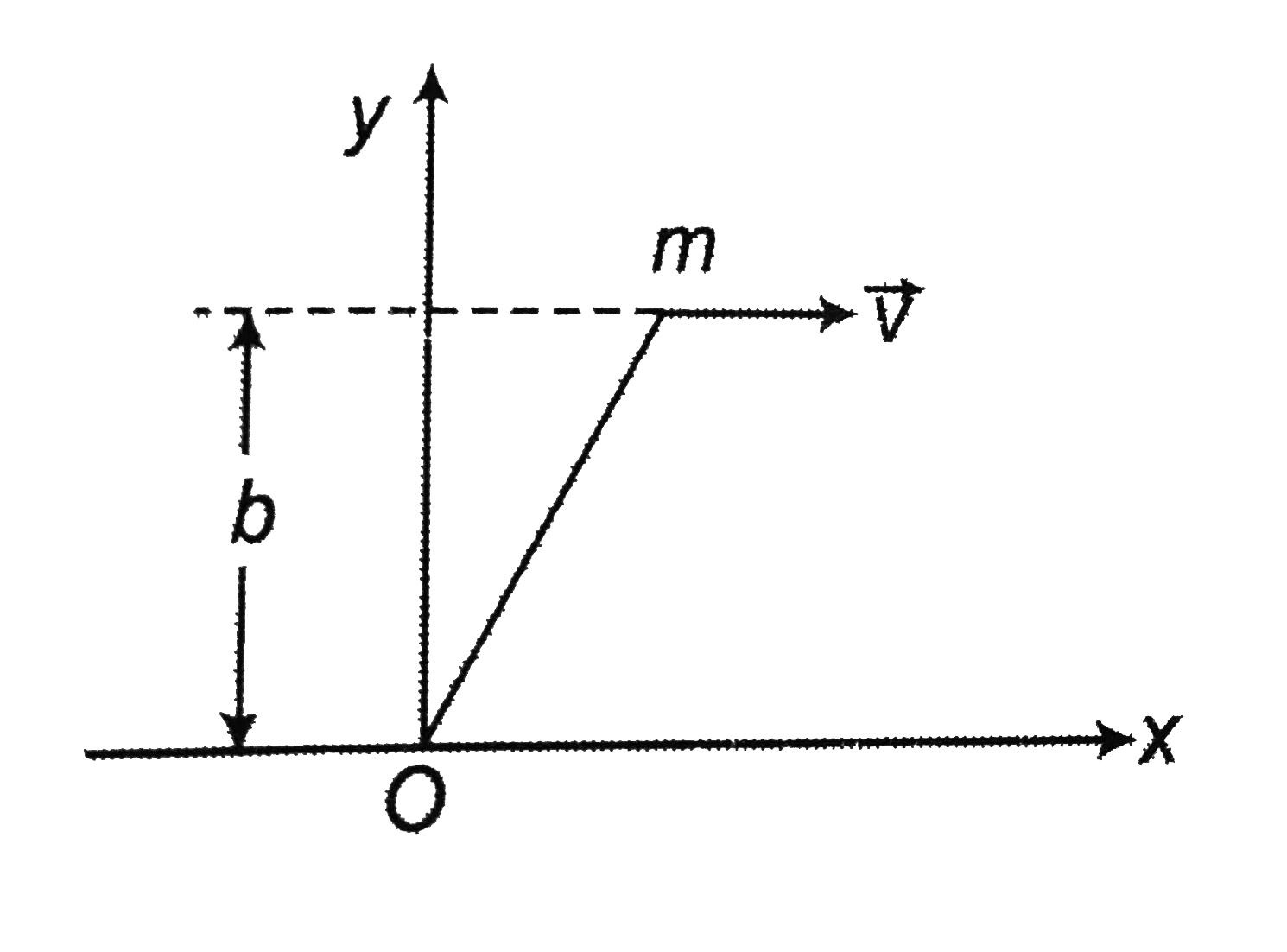If the particle of mass m is moving with constant velocity v parallel to x-axis in x-y plane as shown in (figure), Find its angular momentum with respect of origin at any time t.

We know that angular momentum,
→L=→r×→p in terms of component becomes
→L=∣∣
∣
∣∣ˆiˆjˆkxyzpxpypz∣∣
∣
∣∣
As motion is in x-y plane (z=0andPz=0).
So →L=→k(xpy−ypx)
Here x=vt,y=b,px=mv, and py=0
∴→L=→k[vt×0−bmv]=mvbˆk

Topper's Solved these Questions
- VECTORSBook:CENGAGE PHYSICSChapter:VECTORSExercise:Exercise Subjective
Explore 28 Videos
- VECTORSBook:CENGAGE PHYSICSChapter:VECTORSExercise:Exercise Single Correct
Explore 51 Videos
- VECTORSBook:CENGAGE PHYSICSChapter:VECTORSExercise:Exercise 3.1
Explore 19 Videos
- TRAVELLING WAVESBook:CENGAGE PHYSICSChapter:TRAVELLING WAVESExercise:Integer
Explore 9 Videos
- WORK, POWER & ENERGYBook:CENGAGE PHYSICSChapter:WORK, POWER & ENERGYExercise:Archives (integer)
Explore 4 Videos
Similar Questions
A body of mass m is moving with a constant velocity along a line parallel to the x-axis, away from the origin. Calculate its angular momentum with respect to the origin?

View SolutionA particle is moving in x-y plane as shown in the figure. Angular velocity of the particle with respect to the origin is

View Solution
Knowledge Check
If a particle of mass m is moving with constant velocity v parallel to x-axis in x−y plane as shown in fig. Its angular moment with respect to origin at any time t will be
AmvbˆkB−mvbˆkCmvbˆiDmvˆiA particle of mass m is moving with constant velocity v parallel to the x-axis as shown in the figure. Its angular momentum about origin O is
 AmvbBmvaCmv√a2+b2Dmv(a+b)
AmvbBmvaCmv√a2+b2Dmv(a+b)A mass m is moving with a constant velocity along a line parallel to the x-axis, away from the origin. Its angular momentum with respect to the origin.
AzeroBremains constantCgoes on increasingDgoes on decreasing
A particle performs uniform circular velocity along a line parallel to the x-axis, away from the origin. Its angular momentum with respect to the origin.
View SolutionA body of mass m is moving with a constant velocity along a line parallel to the x-axis, away from the origin. Its angular momentum with respect to the origin
View SolutionA mass m moving with a constant velocity along a line parallel to the axis, away from the origin. Its anguarl momentum with respect to the origin
View SolutionA particle is moving with constant speed v in xy plane as shown in figure. The magnitude of its angular velocity about point O is

View SolutionA mass M moving with a constant velocity parlale to the X-axis. Its angular momentum with respect to the origin
View Solution

